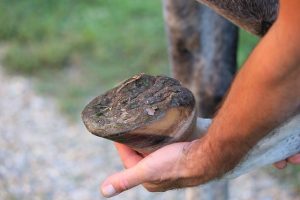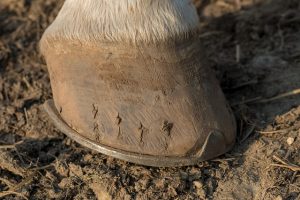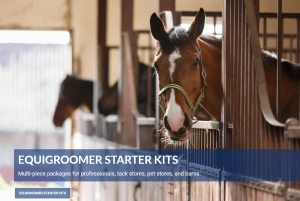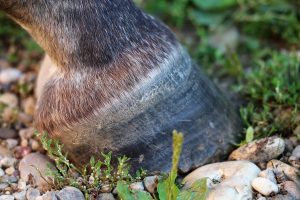Should you shoe your horse?
Or should you let your horse go “barefoot?”
For humans, going barefoot supports:
- A more natural foot control, position and gait.
- Better “mechanics” for feet, hips, knees, joints and core.
- Stronger balance and posture.
- The avoidance of foot pain and/or deformities.
Will horses realize the same benefits in going “barefoot?”
FUN FACT!
Many believe horseshoes bring good luck! BUT, if you are looking for good luck, avoid hanging the horseshoe with the open side on the bottom … all your good luck will flow out!
The Barefoot Horse
The “simple” answer, according to the Horse and Rider, is that “under the right circumstances, many horses can go barefoot as long as their owners are armed with the knowledge to make the right decision.” 
A healthy and strong hoof can provide all the protection, traction and support a horse will need. Barefoot horses build up stronger hoof walls and a thickened sole to protect the hoof over prolonged use.
When it comes to shoeing your horse, the answer is not always on one extreme or the other. There are many available options whether to shoe or not to shoe your horse!
So, what knowledge does the horse owner need to make the right decision when it comes to their horse?
To Shoe or Not to Shoe Your Horse: Why
There are several things to consider based on your horse and his individual needs. Horses with naturally strong,  healthy feet may be able to go without shoes while other equines may need the additional support and protection.
healthy feet may be able to go without shoes while other equines may need the additional support and protection.
According to Practical Horseman Magazine, “while some horses have naturally strong, healthy feet and can go without shoes in many situations, others need additional support and won’t benefit from being barefoot.”
When trying to determine whether to shoe your horse, consider the following questions.
- What is your horse’s level of activity?
- What surfaces is your horse exposed to?
- Hard, stony or rough ground/trails?

- Softer surfaces like sand, pastures or grass?
- Does your horse need to optimize its performance in difficult conditions or competition?
- Harder surfaces may require shoes for increased support, protection and traction. Rocky, rough, icy or snow-packed surfaces or the need for optimized performance can cause foot soreness, bruising, and decreased performance for the barefoot horse so horseshoes offer the horse more benefits.
- Hard, stony or rough ground/trails?
- Does your horse have conformation faults or medical conditions that need to be corrected or addressed?
-
- Horses with physical or conformation defects that cause unnatural movement may require additional support from horseshoes.
- Horses with arthritis, laminitis or ringbone usually need shoes.
- Horses with weak hoof walls or weak, thin, pliable and tender soles could benefit from wearing shoes. (According to Esco Buff, a professional farrier, there is no truth that shoeing weakens horses’ soles over time.)
-
If you have decided to shoe your horse, when whould it be done?
Did You Know?
The hard exterior of your horse’s hoof is made of a durable protein called keratin.
That’s the same material that makes up your fingernails!
When to Shoe Your Horse
 For horses wearing shoes, the RSPCA recommends: “shod horses need to re-shod every four to six weeks irrespective of whether they have worn the shoes out or not. Hooves grow continuously and when shod, the hoof cannot wear down as it can with an unshod horse.”
For horses wearing shoes, the RSPCA recommends: “shod horses need to re-shod every four to six weeks irrespective of whether they have worn the shoes out or not. Hooves grow continuously and when shod, the hoof cannot wear down as it can with an unshod horse.”
According to the EquiMed website, for barefoot horses, “a general rule of thumb is this: if a horse’s hooves grow faster than they wear, they only need to be trimmed.”
So, remember, when deciding to shoe or not shoe your horse, the decision should always be about what’s best for the horse. Always work with your regular vet and farrier to make the best-informed decision for your equine!

Get started with our EquiGroomer Starter Kits for your Retail Pet Shop, Tack Shop or Barn today!
16-Piece Retail Pet Shop Kit
16-Piece Tack Shop Kit
For individual or bulk orders, call 860-573-0604 or click here to send us an email.
Image Credits (in order of appearance)
Ryan McGuire / Pixabay
Annick Vanblaere
G Horvat / Pixabay
Goran Horvat / Pixabay
Henryk Niestroj / Pixabay
Patou Ricard / Pixabay
Lindsay66 / Pixabay



